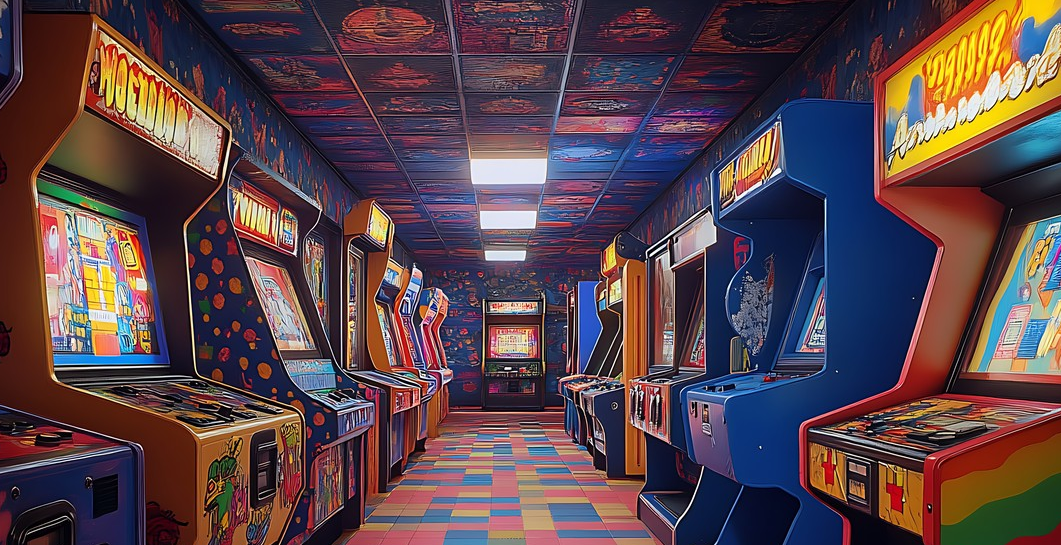Air hockey is a thrilling game that has entertained players for many years. But have you ever stopped to think about how an air hockey table actually works? This article will break down the mechanics behind the game, explaining the components of the table, the science of air cushioning, and how the puck interacts with the surface. Understanding these elements will give you a deeper appreciation for this exciting sport!
Key Takeaways
- Air hockey tables use a blower system to create an air cushion, making the puck glide smoothly.
- The design of the puck and the surface texture significantly affect gameplay and puck movement.
- Regular maintenance is important to ensure proper airflow and keep the table in good condition.
Air Hockey Table Components

An air hockey table is made up of several key components that work together to create an exciting gaming experience. The playing surface is crucial; it’s usually made from smooth plastic or laminate and has tiny holes that allow air to flow through. This airflow is what makes the puck glide effortlessly across the table. Beneath the surface, there’s an air blower system that pushes air upwards, creating a cushion that reduces friction.
The air holes are strategically placed to ensure even airflow across the entire surface. If any holes are blocked, it can lead to uneven gameplay, which is why keeping them clean is essential. The side rails not only keep the puck in play but also help bounce it back into the game, adding to the fast-paced action.
Lastly, many modern tables come equipped with electronic scoring systems that enhance the gaming experience. These systems can light up and make sounds when a goal is scored, adding excitement to each match.
The Science of Air Cushioning

Airflow Dynamics
When the air blower system pushes air through the holes in the table, it creates a cushion of air. This cushion helps the puck to float slightly above the surface, which reduces friction. With less friction, the puck can glide smoothly and quickly across the table, making the game more exciting.
Reduction of Friction
Friction is the force that slows things down. In air hockey, the air cushion significantly lowers the friction between the puck and the table. This means players can hit the puck harder and it will travel faster. The design of the puck also plays a role here; its lightweight material allows it to respond quickly to strikes, enhancing the overall gameplay experience.
Bernoulli’s Principle
Bernoulli’s Principle explains how the speed of air affects pressure. As the air moves faster under the puck, the pressure decreases, allowing the puck to lift slightly. This principle is what makes air hockey unique. The combination of airflow and pressure creates a fun and dynamic game.
In summary, the science of air cushioning is all about how air dynamics, friction reduction, and Bernoulli’s Principle work together to create a thrilling game.
Interaction Between Puck and Surface

Puck Design and Material
A lighter puck can move faster but may also be more unpredictable. In contrast, a heavier puck tends to stay grounded better, providing more control. The shape of the puck also matters; round pucks glide smoothly, while those with edges can create unexpected movements. This variability adds excitement to the game, making each match unique.
Surface Texture and Its Impact
A smooth surface allows the puck to glide effortlessly, leading to faster gameplay. On the other hand, a rough or uneven surface can slow down the puck, requiring players to adjust their strategies. The difference between these surfaces is like skating on ice versus trudging through mud.
Understanding how these elements interact can give players an edge in their matches, enhancing their overall experience. If you’re facing issues with your arcade games, don’t worry! Many common problems can be fixed easily. For more tips and solutions, visit our website and explore our resources. We’re here to help you get back to the fun!
Wrapping Up: The Science of Air Hockey
The air hockey table is not just a flat surface; it’s a carefully designed system that enhances gameplay and keeps players coming back for more! The way the puck glides smoothly is thanks to air blowing through tiny holes in the table, which helps it float and reduces friction. This means that even a gentle push can send the puck flying! Plus, the design of the paddles and the table itself is carefully thought out to make the game exciting and fair. So, the next time you play, remember that there’s more to it than just quick reflexes—there’s science at play, making every match thrilling!
Frequently Asked Questions
How does the air cushion help the puck move in air hockey?
The air cushion from the table reduces friction, making it easier and faster for the puck to slide around. This helps create a smoother and quicker game.
What is the role of air pressure in lifting the puck?
Air pressure creates a cushion that lifts the puck slightly off the surface. This allows it to glide easily and be controlled better by players.
Can the direction of the air jets change how the puck moves?
Yes, if the air jets are pointed too high, the puck might lift too much and be hard to control. If they’re too low, the puck might not lift enough to move smoothly.






